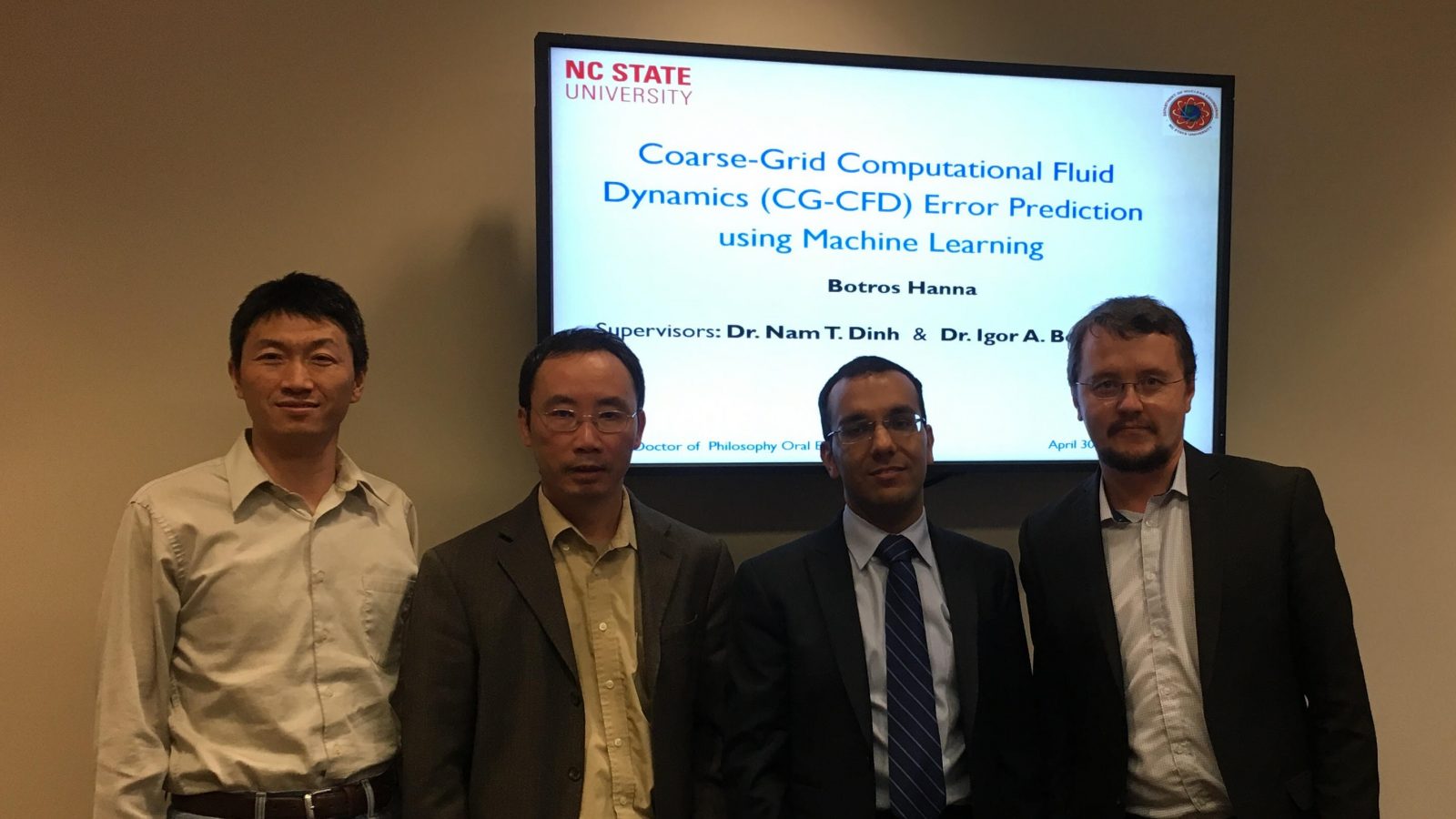On April 30, Botros Hanna successfully defended his PhD dissertation, Coarse-Grid Computational Fluid Dynamics (CG-CFD) Error Prediction using Machine Learning. Botros’ committee consisted of his co-advisors, Igor Bolotnov and Nam Dinh, and members, Robert Youngblood and Tiegang Fang.
Abstract
HANNA, BOTROS NASEIF. Coarse-Grid Computational Fluid Dynamics (CG-CFD) Error Prediction using Machine Learning. (Under the direction of Prof. Nam T. Dinh and Prof. Igor A. Bolotnov).
Nuclear reactor safety research requires analysis of a broad range of accident scenarios. One of the major safety barriers against nuclear fission products release is the containment structure. Modeling and simulation are essential tools to identify parameters affecting Containment Thermal Hydraulics (CTH) phenomena. The thermal-hydraulic modeling approaches used in the nuclear industry can be classified in two categories: system-level codes and Computational Fluid Dynamics (CFD) codes. System codes are not as capable as CFD of capturing and giving detailed knowledge of the multi-dimensional behavior of CTH phenomena. However, CFD computational cost is high when modeling complex accident scenarios, especially the ones which involve longtime transients. The high expense of traditional CFD is due to the need for computational grid refinement to guarantee that the solutions are grid independent.
To mitigate the computational expense, it is proposed to rely on coarse-grid CFD (CG-CFD). Coarsening the computational grid makes the computation significantly more affordable for practical applications, but it also increases the discretization (grid-induced) error which depends on the grid size and varies with space and time. Hence, a method is developed to produce a surrogate model, that predicts the distribution of the CG-CFD local error, to correct the flow variables of interest. Given high-fidelity simulations (sufficiently fine-mesh simulations), a surrogate model is trained to predict the CG-CFD local errors as a function of the coarse-grid local flow features. The surrogate model is constructed using machine learning regression algorithms (namely, artificial neural network and random forest regression).
This proposed method is applied onto a three-dimensional turbulent flow inside a lid-driven cavity domain. A set of scenarios that test the proposed method are studied. These scenarios investigate the capability of the surrogate model to interpolate and extrapolate outside the training data range. These scenarios also cover a range of Reynolds number in the turbulent flow and transitional flow range plus a range of grid sizes, aspect ratios and different variables of interest. It was found that the random forest regression technique is predicting the grid-induced error better than the neural network although random forest technique is computationally cheaper. The proposed method maximizes the benefit of the available data and shows potential for a good predictive capability.
The proposed CG-CFD approach is different from conventional CFD for two reasons: (1) Typically, for each new fluid flow problem, a new simulation is needed, and grid-independent solution is required, even if the new flow problem is only slightly different from old one. In the proposed CG-CFD method, the available data are utilized to predict the variable of interest for the new flow problem (that is simulated by a coarse grid) given the available high-fidelity data. The success of this approach is based on the assumption that the available high-fidelity data and the new flow problem have similar physics. (2) In conventional turbulence modeling, turbulence models typically rely on incorporating more physics and using empirical models for some parameters based on the available validation data. For different flow conditions, new turbulence models may be constructed. The proposed method is data driven so each new experimental data or high-fidelity simulations lead to improving the method capability.

